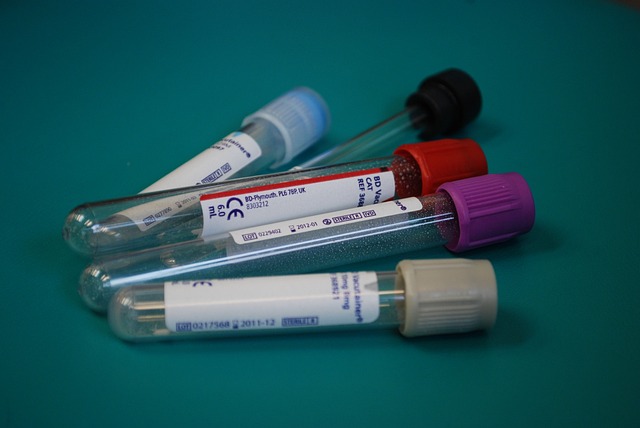Asbestos testing for older homes in San Antonio is crucial due to the city's high concentration of pre-1980s housing, where asbestos was commonly used. This non-metallic mineral, now known for its severe health risks, can be found in insulation, flooring, roofing, and plumbing/electrical components. Regular testing identifies these hazards and allows for remediation to prevent mesothelioma and asbestosis. The process involves property inspections, sample collection, lab analysis using advanced techniques like TEM and XRF, and adherence to safety standards by certified professionals. Remediation is necessary when asbestos levels exceed guidelines, with containment or removal methods employed while following strict containment procedures during cleaning.
In many older homes, asbestos lurks unseen, posing a significant risk to indoor air quality. Asbestos, a once-ubiquitous building material, can break down into tiny fibers that, when inhaled, lead to severe health issues. This article delves into the crucial topic of asbestos testing for older homes in San Antonio, exploring its prevalence, potential hazards, and the comprehensive process behind ensuring safe indoor environments. Learn about recommended procedures to identify and mitigate asbestos-related risks specifically tailored to San Antonio residences.
- Understanding Asbestos and Its Presence in Older Homes
- The Importance of Indoor Air Quality Testing for Asbestos
- Comprehensive Asbestos Testing Process and Recommended Procedures for San Antonio Homes
Understanding Asbestos and Its Presence in Older Homes

Asbestos is a naturally occurring mineral fiber that has been widely used in building materials, insulation, and flooring due to its strength and fire-resistant properties. While it was once highly valued for these attributes, today, asbestos is well-known as a significant health hazard, particularly in older homes built before the 1980s when its use became regulated. In San Antonio, as in many cities with older housing stock, asbestos testing is crucial to ensure indoor air quality and the safety of residents.
Many older homes in San Antonio may contain asbestos in various forms, such as asbestos-containing insulation, flooring tiles, roofing shingles, or even in older plumbing and electrical equipment. Over time, these materials can degrade, release fibers into the air, and become a source of asbestos exposure for homeowners and occupants. Asbestos testing is essential to identify these hidden hazards and take appropriate measures to mitigate any potential risks associated with asbestos-contaminated indoor environments.
The Importance of Indoor Air Quality Testing for Asbestos

In San Antonio, particularly in older homes, asbestos testing is crucial for maintaining optimal indoor air quality. Asbestos, a mineral often found in building materials used prior to the 1980s, can pose significant health risks when released into the air due to disturbance or degradation. Testing is essential to identify any presence of asbestos fibers, especially in homes built before this period. Early detection allows for appropriate remediation methods to be implemented, ensuring a safer living environment.
Regular indoor air quality checks for asbestos are particularly important given that prolonged exposure to asbestos-contaminated dust and fibers can lead to serious health conditions like mesothelioma and asbestosis. Asbestos testing in San Antonio helps residents take proactive measures to mitigate these risks, especially crucial for older homes where the likelihood of materials containing asbestos is higher.
Comprehensive Asbestos Testing Process and Recommended Procedures for San Antonio Homes

Asbestos is a hazardous material commonly found in older San Antonio homes, particularly those constructed between the 1940s and 1970s. Comprehensive asbestos testing for indoor air quality checks is crucial to ensure the safety of residents and comply with local regulations. The process involves several steps: first, a thorough inspection of the property to identify potential sources of asbestos, such as insulation, flooring, or roofing materials. Samples are then collected from suspect areas using specialized equipment to avoid dispersion of asbestos fibers. These samples are sent to accredited laboratories for analysis using advanced techniques like transmission electron microscopy (TEM) and X-ray fluorescence (XRF).
Recommended procedures for asbestos testing in San Antonio homes include enlisting the services of certified professionals who adhere to strict protocols. Testing should cover both air and surface samples to ensure a comprehensive assessment. Results are evaluated against safety standards, and if asbestos is detected at levels exceeding guidelines, appropriate remediation measures must be implemented. This may involve containing or removing contaminated materials while adhering to strict containment procedures to minimize fiber release during the cleaning process.
Asbestos testing is crucial for ensuring the safety of indoor air quality, especially in older San Antonio homes. Given the potential health risks associated with asbestos exposure, comprehensive testing procedures are essential to identify and mitigate any hazards. By following recommended procedures, homeowners can take proactive measures to maintain a healthier living environment, thereby enhancing overall well-being. Regular inspections play a vital role in navigating the challenges posed by this hidden threat and fostering a safer, more comfortable home.
